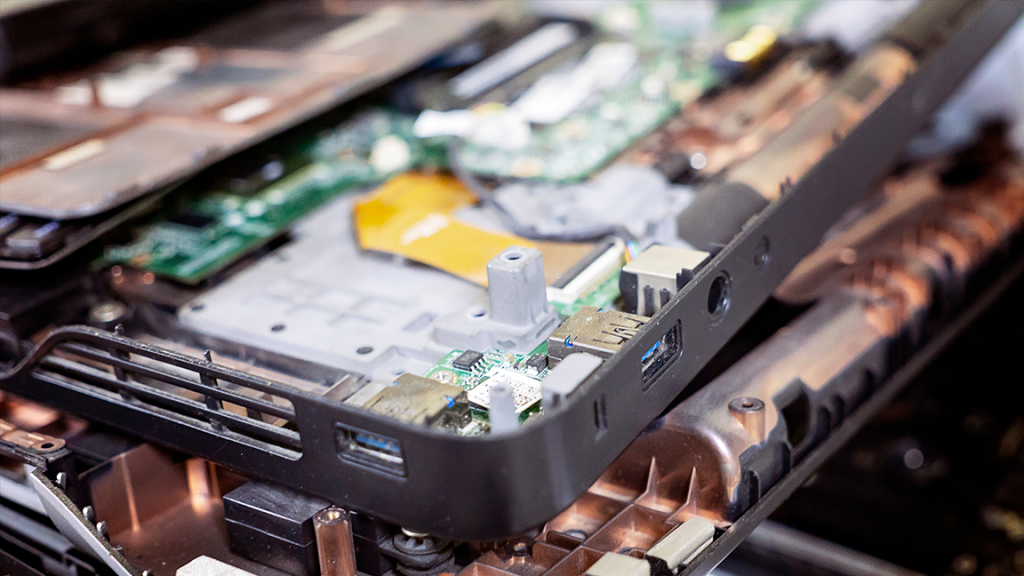The Importance of Strategic Telecommunications Planning: How Thinking Ahead Impacts the Future Performance of 5G Technology
Mobile-to-mobile communications began almost 100 years ago with the walkie talkie, but over the past several decades, mobile device capabilities have expanded dramatically thanks to advancements in cellular technology. In the immediate term, people across the United States will have access to telecommunications services like never before, but the degree of access and performance will be heavily impacted by our strategic approach to upgrading our digital infrastructure.
This article explains the underlying advancements enabling 5G, how they differ from the status quo, and how strategic telecommunications planning will be a rate-limiting step in achieving high-performing 5G nationwide.
The Transformative Power of 5G Technology
Now, we’re entering the age of 5G, which stands for the “5th generation of mobile communications”. It will transform industries like healthcare and transportation, and experts estimate that it will enable over $13 trillion in new or enhanced goods and services across the globe.
It is important to acknowledge that all mobile communications rely on radio systems. The earliest mobile phone experiments in the 1960s led to the realization that widely-used mobile systems would require a high number of supportive base stations, each of which would cover a limited geographic space now known as a “cell”.
Although the fundamental technologies enabling 5G are the same as all previous generations, there are a number of systemic changes in how cellular service is delivered. Probably most importantly, 5G follows a major paradigm shift throughout the technological sector by emphasizing scalability and versatility.
These improvements are made possible by four major improvements of 5G over 4G:
- Speed. For most of us, the improvement we’ll probably notice first is speed. Experts predict that 5G will take a small fraction of the time required by 4G and make downloads roughly 100 times faster.
- Improved Capacity in Highly Concentrated Spaces. One challenge of attending major events like sports games and festivals is that local network infrastructure quickly becomes overwhelmed, resulting in reduced or lost cellular access. 5G’s enhanced transmission efficiency will allow previously congested networks to handle the demands of highly concentrated network areas.
- Latency. Although we tend to think about the time lag for downloads and transmission times between devices as the same thing- speed – they represent two distinct aspects of mobile performance. Latency is the measurement of how quickly your mobile device can communicate with another mobile device or the server that’s relaying the information. 4G already offers very low latency but 5G will virtually eliminate it and enable massive improvements in technologies, such as self-driving cars, for example, making these types of innovations a reality by allowing for real-time feedback.
- Sustainability. 5G uses significantly less power than its predecessors thanks to the increased efficiency of its transmissions. It also helps to facilitate other emerging technologies and trends (Electric Vehicles and remote work capabilities) that are known to help minimize emissions and pollution.
Challenges in Delivering 5G
In order to reach its full potential, the rollout of 5G must overcome a handful of major challenges:
Critical 5G-Enabling Technologies are Incompatible with Existing Infrastructure
Although we already have a robust 4G telecommunications infrastructure, it doesn’t support the Orthogonal Frequency Division Multiplexing (OFDM) modulation format used to encode 5G’s high-band airwaves. That’s why additional cells and antennas, as well as a strong network of fiber-optic cables, will need to be installed nationwide.
Also, a key benefit of 5G is that it uses smaller transmitters that can be placed on existing structures, instead of requiring standalone cellular towers like 4G. These transmitters must be physically installed by tradespeople across the United States, which is a gargantuan task.
Lack of Skilled Telecom Workers and Shrinking Talent Pool
Not only will 5G require the collaboration of engineers and tradespeople, but there is a simultaneous shortage of skilled workers throughout the telecom industry. Data shows that over 30% of top networking and operations roles are “ill-equipped to build out new innovative offerings”.
To make the situation worse, the proportion of incoming telecom workers has been falling precipitously, cutting the proportion of younger telecom talent by more than half of what it was in the 1980s. The shortage is so severe that Congress has been working to enact legislation to address this telecommunications workforce shortage. Without more dedicated efforts to build up a talent pipeline, the rollout of 5G may be significantly delayed.
Decentralized and Haphazard Rollouts of 5G Technology
Currently, approaches to the rollout of 5G have been siloed and uncoordinated, meaning that significant amounts of time have been lost amongst government agencies, mobile carriers, and the tradespeople and services responsible for physically laying cables. There must be a more streamlined and strategic approach to laying these cables, and for them to reach areas still without 4G access, the efforts will need to think of how to strategically balance the need for telecom infrastructure between rural and urban areas, as well as higher and lower income areas.
Struggling with Your 5G Rollout? Sphaera Can Help.
The next generation of mobile communications will transform society as we know it and reach existing predictions, but only if the 5G rollout is strategic and well-executed. And at its most fundamental level, the rollout will rely on a skilled and orderly installation of the related infrastructure.
At Sphaera, we’re a team of experts and skilled telecom workers who quickly and methodically work to deliver on the needs of 5G, including the laying of fiber optic cables and other telecom-enabling hardware. We have the necessary vehicles, talent, and internal pipelines to deliver on the demands of 5G. You can learn more by visiting our website and giving us a call today!




